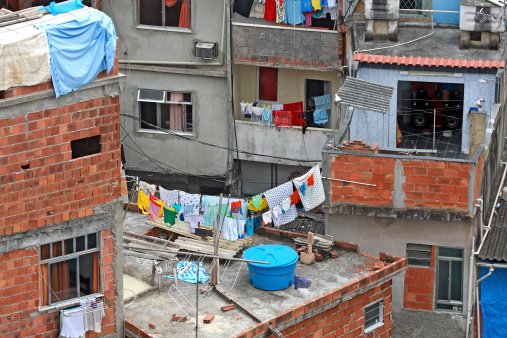 Editor’s Note: On November 10, 2014, Carinne Brody, DrPH, assistant professor and chair of the global health track at the College of Education and Health Sciences, Touro University, California, will speak at Albert Einstein College of Medicine’s Global Health Conference. She’ll address global health trainee program ethics. We asked her to share some of her thoughts on the subject in advance of her appearance.
Editor’s Note: On November 10, 2014, Carinne Brody, DrPH, assistant professor and chair of the global health track at the College of Education and Health Sciences, Touro University, California, will speak at Albert Einstein College of Medicine’s Global Health Conference. She’ll address global health trainee program ethics. We asked her to share some of her thoughts on the subject in advance of her appearance.
Lockjaw from tetanus, advanced tuberculosis, rare parasitic infections: the list of the patients’ illnesses in the general medicine ward at a teaching hospital in East Africa reads like a collection of infectious disease case reports. A group of global health students from the U.S. wanders the ward with wide eyes. “We would never see this back home,” they whisper.
The practice of people from wealthier countries taking organized tours through slums and favelas to see life amid squalor has recently been criticized in the media. Are global health training programs much different?
Does Poverty or “Slum” Tourism Do Harm?
Poverty or slum” tourism is not a new phenomenon, but the number of organized tours in places such as Rio de Janeiro, Mumbai and Nairobi has increased over the past 10 years. Investigative reports have raised ethical questions about this practice in the Smithsonian magazine, National Geographic’s Traveler and the Huffington Post.
The main argument against poverty tourism is that it exploits the poor. Kennedy Odede, who grew up in a slum in Kenya, described the practice this way: “Slum tourism is a one-way street: They get photos; we lose a piece of our dignity.”
Tourists satiate their curiosity and slum dwellers are left feeling . . . unsatisfied. But what does this suggest about global health training programs?
Short-term global health training programs commonly involve graduate students from clinical or public health programs working with health facilities and nongovernmental organizations (NGOs) in poor countries for anywhere from two weeks to three months. Every year, more graduate students are going abroad under the auspices of global health training: most major universities in the U.S. and many in Europe offer such training, according to the Consortium of Global Health Universities, and more than 300 different global health degree options are offered by members of the Schools of Public Health Application Service.
The current Ebola outbreak has heightened national attention on global health as we watch the devastation in West Africa and react to the Ebola risk in the U.S.
During global health training trips, students are exposed to the realities of broken healthcare systems. They see how dirt floors in homes increase the risk of hookworm infection in children. They watch what untreated HIV can do to grown men and women. They realize how far a women experiencing bleeding after childbirth has to go to get help.
These training experiences may have profound emotional effects on students and may even make them more compassionate practitioners back home.* Involvement in such projects often results in thesis papers or manuscripts that make doctorate and residency applications more impressive. Most students, on their return from such training, will tell you that they have benefited from seeing the realities of poverty.
But bearing witness to global healthcare injustice is not enough.
Who Experiences the Benefits of Global Health Training?
What real, tangible benefits are experienced by the patients, communities, local NGOs or healthcare facilities that host global health students?
A growing number of global health practitioners are asking the same question: are the benefits of global health training programs shared equally among the wealthy universities that send students abroad and the poor countries that allow those students to train in their clinics?
Among these voices is that of Dr. Jaime Miranda, a physician and clinical epidemiologist from Peru and a leading global health researcher, who posted an online video for the Geneva Health Forum in 2014 in which he expresses his concern that global health training is also a “one-way street.” In a written response to a set of best-practice guidelines on global health training by Crump and Sugarman (2010), Dr. Miranda and his co-authors say that “global health training . . . is still focused on training students from rich countries (paying high tuition fees to their institutions), and not quite contributing to leverage the underlying disparities.”
Are universities that offer (and benefit from) global health training programs morally obligated to distinguish their programs from slum tours? What can training programs do to ensure the quality of their efforts? Can they prepare culturally competent students, increase the time spent in the countries, compensate local supervisors for their time and effort, develop exchange programs for foreign trainees to come to the U.S. and create opportunities for jointly funded research?
Finding Solutions
What are the best ways to ensure shared benefits among U.S. universities that send global health trainees abroad and those universities, clinics and NGOs in developing countries that host them? Perhaps we need a minimum-standards checklist to ensure that U.S.-based global health programs have thought through the balance of benefits. Developing a transparent way to assess benefits among partners involved in global health training programs is necessary if we want to distinguish them from the slum tours of Mumbai.
* Several studies have shown that students who participate in global health internships are more likely to develop careers in the public health sector, work with ethnic minorities and underserved populations and enter primary care fields.

